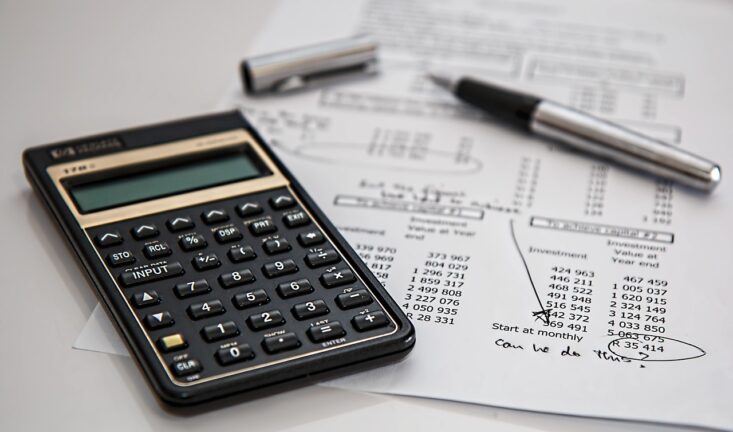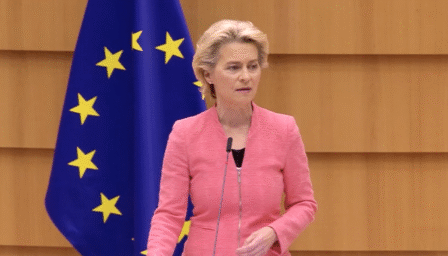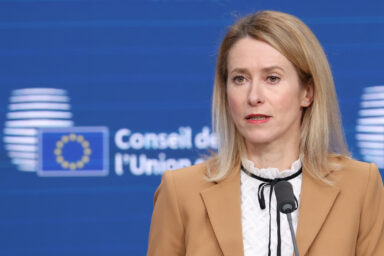The Council has adopted new value added tax rules for distance sales of imported goods. This should encourage suppliers outside the EU to use the import one-stop-shop for reporting and collection of the tax.
The EU Council finalised new VAT rules on 18 July to simplify tax collection for goods bought online from outside the bloc. The reforms shift responsibility for paying import VAT from consumers to foreign sellers or platforms. This aims to curb tax evasion and streamline compliance.
Under the directive, non-EU suppliers must now handle VAT payments for goods entering the EU. They will pay the tax in the member state where the buyer lives. The rule encourages use of the import one-stop shop (IOSS), a portal launched in 2021. IOSS lets foreign firms register VAT in one EU country while selling across the bloc. Those avoiding IOSS face a bureaucratic hurdle: registering separately in all 27 member states.
IOSS requires VAT to be paid upfront during checkout, not at customs. This prevents lost revenue from unpaid border fees and reduces fraud. It also spares consumers surprise charges during delivery. The system simplifies reporting for businesses, which file a single monthly return. The directive updates the 2006 VAT framework and takes effect in three years from now.
You might be interested
What the directive does
The main objectives are to facilitate cross-border business, prevent distortions of competition and reduce the risk of double taxation or fraud. The updated set of rules features the following:
– specifies which goods and services VAT applies to
– provides that the standard VAT rates applicable to most goods and services must be no less than 15%
– contains special VAT schemes tailored to specific groups, such as small businesses and importers, and provides exemptions for certain types of supplies
– requires taxable entities to follow invoicing and record-keeping standards in order to support compliance and efficient tax administration
– outlines procedures for VAT deductions and refunds, enabling businesses to recover VAT on legitimate business expenses.
VAT is a consumption tax on most goods and services. Businesses collect it from customers and pass it to governments. For example, a bookshop adds VAT to a book’s price and sends the tax to authorities. Firms also pay VAT on their own purchases but deduct this from what they owe.
The tax funds public services like schools, hospitals and transport. In 2023, EU states raised over €1tn via VAT – 7.2% of bloc-wide GDP. VAT made up 15.7% of total government tax income. It also feeds the EU budget. States contribute 0.3% of their VAT base as “own resources”, capped at 50% of national income. This provides 10% of EU funding.
Reflecting the growth of e-commerce
But VAT gaps persist. In 2022, €89bn went uncollected due to fraud, evasion and administrative errors. Corporate bankruptcies and miscalculations also play a role. Such losses strain public finances. The new rules aim to narrow this gap by tightening enforcement.
EU VAT laws harmonise national systems to protect the single market. The legal basis is Article 113 of the Treaty on the Functioning of the EU. Reforms require unanimous member-state approval and European Parliament consultation. The 1967 VAT Directive sets common standards. A 2011 regulation ensures uniform implementation.
The latest changes reflect growing e-commerce. Before IOSS, low-value imports often dodged VAT, creating unfair competition for EU firms. The 2021 IOSS scheme initially applied to goods under €150. The new rules expand its scope, though exact thresholds remain unclear.
Non-EU platforms like Amazon or Alibaba now bear VAT liability. This targets sellers who exploit loopholes by routing goods through third countries. The EU estimates improved compliance could recover billions annually.
Meticulous tracking required
Critics argue the 2028 start date is too slow. Others warn small EU businesses may struggle with new reporting tools. But supporters say the transition period lets firms adapt.
VAT’s complexity stems from its layered design. It taxes the value added at each production stage. A farmer pays VAT on seeds, deducts it from tax owed on crop sales, then the food processor repeats the cycle. Final consumers foot the total bill.
This system demands meticulous tracking. Cross-border trade adds friction. Before harmonisation, varying national rates disrupted the single market. The 1967 directive standardised rules but allowed rate flexibility. Today, VAT rates range from 17% in Luxembourg to 27% in Hungary.
The EU’s “own resources” system ties VAT contributions to economic size. Richer states hit the 50 per cent GNI cap sooner, easing their burden. Poorer members contribute proportionally more from VAT. This balances equity with fiscal capacity.
Uniform enforcement key to success
Fraud remains endemic. Criminal networks exploit weak spots, such as “carousel” schemes where goods circulate to claim fake refunds. The 2022 €89 billion gap – nine per cent of total VAT due – highlights the challenge. Digital tools like IOSS aim to modernise enforcement.
The 2011 implementing regulation standardised audits, invoices and refunds. It also introduced the VAT Information Exchange System (VIES), a database for cross-border transactions. These reforms reduced gaps from 14% in 2015 to 9% in 2022.
Yet hurdles remain. Differing national tax administrations complicate data sharing. Some states lack resources to chase cross-border evasion. The new directive’s success hinges on uniform enforcement.
For businesses, the changes bring clarity. Foreign sellers gain a single portal for EU-wide VAT, cutting compliance costs. Consumers avoid hidden fees. But platforms face higher liability risks. Those mishandling VAT could lose market access.
A modern tax
The rules align with global trends. Countries like Norway and Britain have similar import VAT models. The EU’s scale, however, makes its system a benchmark. If effective, it could inspire reforms elsewhere.
In summary, the directive tightens VAT enforcement while easing cross-border trade. It reflects the EU’s push to digitise tax systems and protect revenues. Success will depend on cooperation between states, businesses and platforms.
The legal framework for VAT in the EU includes Article 113 of the Treaty on the Functioning of the EU, the VAT directive, the VAT regulation, and the VAT in the digital age package. The directive is now to come out in the Official Journal of the EU, entering into force twenty days later. The rules will apply from 1 July 2028.











